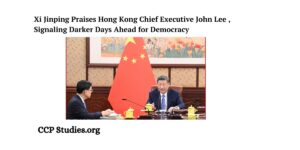
Translated Chinese Documents"
Text: Liu Peng, PhD candidate at Renmin University of China
This article was published in 2022-11-02 issue of (见解 ) of Think Tank China (智库中国-中国网) and translated by Tahir Imin Uyghurian
On October 31st, local time, the United States, the United Kingdom, Canada, and other countries attacked and smeared China at the Third Committee of the 77th United Nations General Assembly, accusing China of so-called “human rights violations” in Xinjiang. In response, nearly a hundred countries spoke out, clearly opposing the politicization of human rights issues and the use of human rights issues to interfere in China’s internal affairs.
Dai Bing, Charge d’Affaires of the Permanent Mission of China to the United Nations, firmly refuted the false accusations and criticized the United States and Western countries for abusing the Third Committee platform to gather small circles, provoke political confrontation, and attack and smear China. He stated that the essence of hyping up the Xinjiang issue is to use human rights issues to undermine China’s stability and maintain their own hegemony. “It is false that they care about human rights in Xinjiang, but it is true that they use Xinjiang to control China and maintain hegemony. Today their target is China, and tomorrow they will point the stick at other developing countries.”
As early as April 2020, a non-governmental organization submitted a report to British Customs, claiming that there was “forced labor” involving Uyghurs in China’s Xinjiang cotton industry. This incident caused great repercussions in China. In fact, in addition to the cotton industry, foreign anti-China forces have been attempting to use the slander of “forced labor” to obstruct and contain the development of many advantageous industries in Xinjiang, including photovoltaics, polysilicon, PVC, and tomatoes.
So, what is the basis for these foreign interest groups to advocate the existence of “forced labor” in Xinjiang? How is it confirmed? This can be seen in the report “The Energy of Freedom. Solar energy, modern slavery, and the Just Transition” was released by James Cockayne of the University of Nottingham in the UK. The report pointed out that foreign interest groups used false data to concoct the so-called “forced labor” conclusion through a so-called “forced labor risk assessment technology,” thereby achieving the purpose of curbing the development of related industries in China.
Why is Xinjiang a target of attacks?
Why do foreign media pay attention to “forced labor” in China’s Xinjiang region? J.C.’s report stated that the development of solar energy can help countries get rid of their dependence on fossil fuels, thereby greatly improving national energy security. However, China accounts for 40% of the world’s polysilicon supply, 77% of global polysilicon production, 97% of polysilicon panel production, 83% of solar cell production, and 74% of solar module production. Simply put, China holds a leading position in the solar photovoltaic manufacturing industry. Developed countries like the United States and the United Kingdom are unable to compete with China in strength. Therefore, they resort to maliciously attacking China from a human rights perspective, wielding the “human rights stick” to discredit Xinjiang’s products. They claim these products are the result of so-called “forced labor” and call for countries to ban their import, thus aiming to curb China’s development.
How do anti-China forces concoct lies about “forced labor” to smear China’s Xinjiang?
How do anti-China forces in Europe and the United States fabricate the so-called “forced labor” in Xinjiang, China? J.C.’s report used its own “forced labor risk assessment technology” model and employed false data to generate the erroneous conclusion that “among the top 30 photovoltaic product producing countries in the world, China’s photovoltaic product units have the highest forced labor risk.”
The three variable data used in the model’s report all come from data unilaterally released by the United States, and some data are even falsified to maintain hegemony. The model’s weight distribution also exhibits malicious intent. The GFL (forced labor goods) variable has the largest weight, specifically targeting China, the leader in the photovoltaic industry. Therefore, the model construction lacks scientific proof, the data source is biased, and the conclusion’s authenticity is highly questionable. Its purpose is simply to fabricate false data to discredit Chinese photovoltaic products, thereby curbing the development of China’s photovoltaic industry.
The paradigm of attacking China: caring about human rights is false, but containing China is true
J.C.’s report began by highlighting the importance of solar energy and raised the issue of “justice” in the energy revolution. Then, it cited numerous false reports to elaborate on the so-called “forced labor” within the solar energy industry chain. Subsequently, the report compared policies across 10 countries and fields and analyzed them using the Policy Currents framework. It then sought policy possibilities to attack China’s photovoltaic industry from various angles





